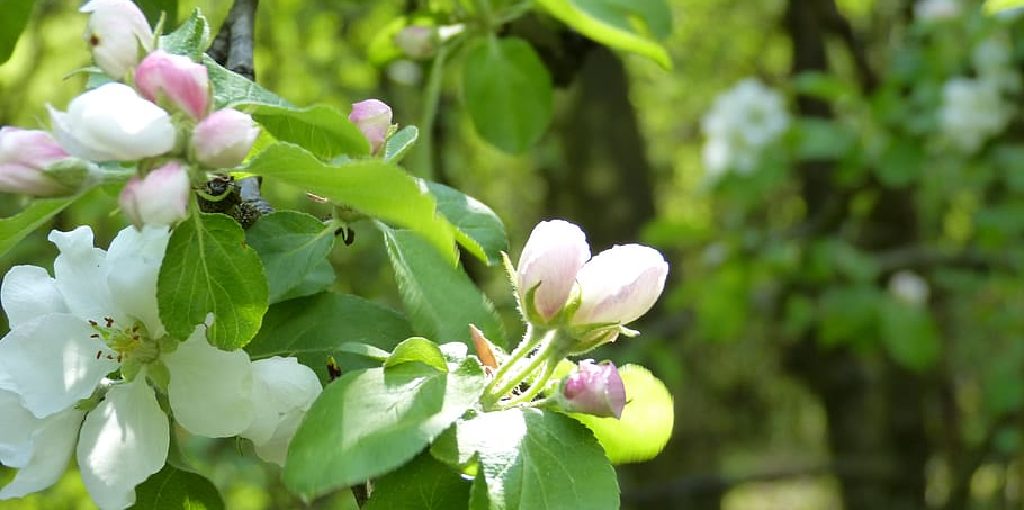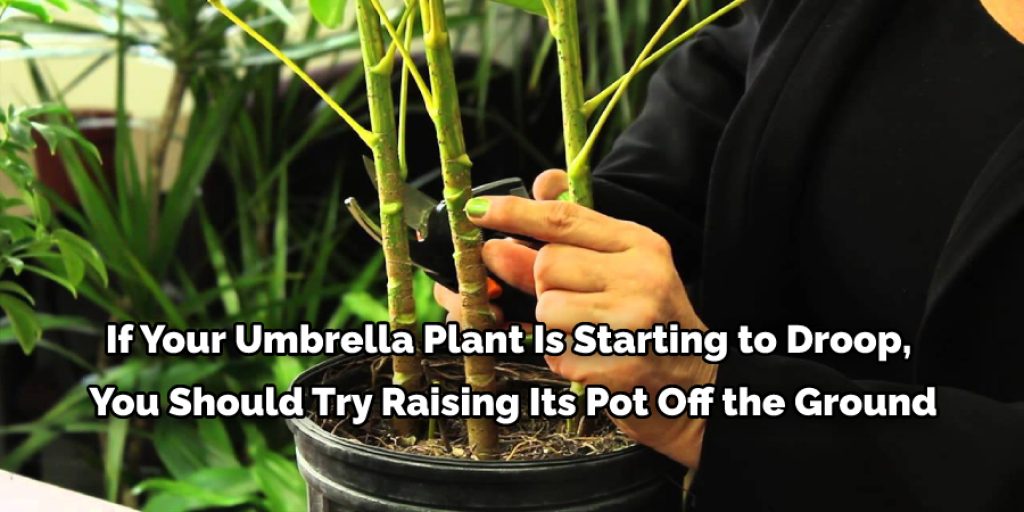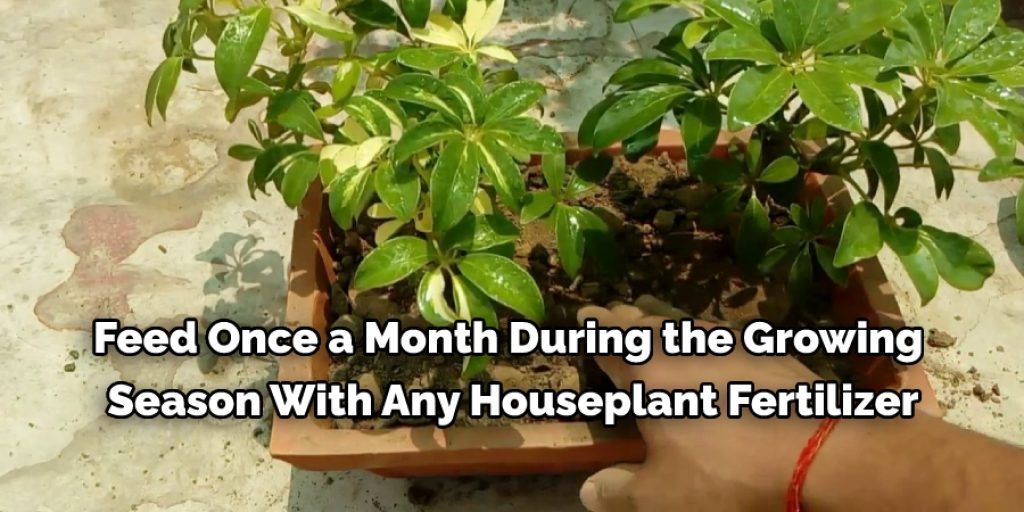How to Save a Dying Umbrella Plant
A common misconception is that an umbrella plant should be watered and fertilized regularly. The truth, however, is that this plant thrives on neglect. You’ll want to water it as infrequently as possible for the best results.
If your umbrella plant starts wilting or looking stressed out after some time without watering, put it in a sunny spot with good air circulation and keep the soil moist until it recovers!
If you want to save your umbrella plant, there are a few things you can do. First, don’t overwater it. Second, make sure the pot is in a sunny spot and check the soil every week for dryness or other issues.
And lastly, trim off any dead leaves at the bottom of the plant’s stem with sharp scissors once a week to keep it healthy and looking nice! Keep reading for some tips on how to save a dying umbrella plant.

What Causes Umbrella Plants to Die?
1. Overwatering:
Although many of the Umbrella Plant’s problems can be solved with proper watering techniques, this is not one of those times. Overwatering your umbrella plant leads to root rot and stem rot. In addition, if too much water accumulates in the soil around its roots, it will lead to the decline of your beloved houseplant. Avoid the following problems by watering your umbrella plant just enough to keep it from wilting. Don’t water again until the soil is dry a few inches below the surface. When you notice yellow leaves on your umbrella plant, that’s an indication that you are overwatering.
2. Underwatering:
If your Umbrella Plant is not receiving enough water, it may become limp and fall over. This happens because the roots cannot grow and expand to support the body of the plant. If your Umbrella Plant is not receiving enough light, it may become etiolated. This means that the plant will become elongated and thin. If your Umbrella Plant is not receiving enough fertilizer, it may become yellow and its leaves may drop off.
3. Root Rot:
Root rot is a common reason for houseplant death. If excess moisture is allowed to sit at the root zone of your Umbrella Plant, it will start to die from the inside out because its roots cannot provide nutrients and support to the rest of the plant. The first signs of root rot are yellowing leaves, followed by wilting and drooping. If the plant is not given proper care at this point, it will eventually die.
4. Transplant Shock:
When you transplant an umbrella plant into a new container or a larger container, shock may occur. To prevent transplant shock, make sure that you do not water your Umbrella Plant for three weeks after transplanting to allow its roots to adjust and settle in. When you are ready to water your Umbrella Plant, make sure that the water penetrates all the way through the potting soil and does not sit on top of the soil or run off.
5. Low Temperature:
The ideal temperature range for an Umbrella Plant is between sixty-five and seventy degrees Fahrenheit during the day and fifty to sixty degrees Fahrenheit at night. If the temperature gets too low, it will prevent photosynthesis from occurring and lead to a decline in your Umbrella Plant.
6. Improper Soil Mix:
Umbrella Plant Houseplants need to be planted in well-draining soil. You can make your own at home or purchase a commercial potting mix. Ensure that it is loose and airy so that the Umbrella Plant’s roots do not become waterlogged. The best soil mix is two parts peat moss and one part perlite. If you choose to use a commercial potting mix, make sure it drains well and does not contain any fertilizer. Fertilizer can burn the roots of houseplants.
7. Improper Location:
This is not specific to Umbrella Plant but a vital thing to keep in mind when finding the correct location for your plants. When you find the right spot, be sure that it receives plenty of filtered light and has protection from direct sunlight, which can also cause damage.
8. Too Much Sunlight:
If your Umbrella Plant is exposed to too much sunlight, its leaves may become dry and wither. It is a common mistake that many new plant owners make by putting their plants in an area with a lot of indirect sunlight when they need bright filtered light.
9. Toxic Fertilizers:
Umbrella Plant Houseplants do not need to be fertilized often. Most soil-less potting mixes do not require a lot of Fertilizer. However, if you have been using a commercial fertilizer on your Umbrella Plant and notice that it is starting to wilt, you have likely applied too much Fertilizer.
10. Insect Infestation:
Insect infestations are also a common reason for the decline of your Umbrella Plant. Aphids, mealybugs, and spider mites may be attracted to their tender leaves and stems because they feed on sap. If you notice tiny black dots or any other visible signs of insects, treat it with an insecticidal soap spray right away so that the problem does not worsen.
Now that we know what causes umbrella plants to die, here are some ways on how to save a dying umbrella plant.
10 Ways on How to Save a Dying Umbrella Plant:

1. Umbrella Plant Care
It’s easy to grow an umbrella plant. It’s not so easy, however, to keep them healthy for any extended period. Umbrella plants are pretty popular among novice indoor gardeners because they’re relatively low maintenance.
Still, just as with other houseplants, the right conditions must be met for them to thrive. In the case of umbrella plants, however, they can be more sensitive to specific problems.
2. Avoid Watering Umbrella Plant Too Much
Overwatering is one of the most common problems when it comes to keeping an umbrella plant alive. They require moist soil, but if their roots are sitting in too much water or never dry out between watering,
they’re likely to suffer from root rot and other health issues. The soil should be kept moist but not soggy. Water the plant thoroughly and then allow the soil to airdry before watering it again.
3. Remove Dead or Dying Leaves from Umbrella
It’s incredibly common for umbrella plants to shed their leaves as they grow older. In most cases, this is not a sign of disease or something that should be worried about, but if there are leaves that are cracked or yellowing around the edges, they should be removed. They’re not getting the necessary amount of light either and will hinder your plant’s growth.
4. Find Out Why It’s Drooping
Drooping is another common problem with umbrella plants because their leaves collect water and weigh it down. This makes it difficult for the plant to photosynthesize and draw in nutrients from outside sources. If your umbrella plant is starting to droop, you should try raising its pot off the ground.
5. Repot Your Umbrella Plant
Repotting an umbrella plant will help them get out of their old pot and give them a fresh new environment to grow in. If your plant is severely roots bound and you’re unable to bring yourself to replant it,
then take some cuttings from the stem or divide up its roots. This should be done every few years because after that point, they tend to decline due to their long, braided roots looking for new sources of water.
6. Give it Plenty of Light
Placing an umbrella plant in too little light causes them to stretch out and become weak. The leaves tend to fade as well because they aren’t receiving enough energy from the sun or artificial lights.
Keep your plant’s leaves bright green by moving it to a sunnier location and make sure it gets plenty of indirect sunlight. If you choose to keep it indoors, then fluorescent lights like those used in seedling growing racks will work well for umbrella plants.
7. Repot Your Plant in New Soil
If your plant is drooping and any leaves are yellowing around the edges, then you’ll need to repot it. If you don’t, the roots will suffocate and kill your plant or cause root rot. It’s best not to reuse soil even if it looks clean because there could very well be a fungus residing in the ground that will attack your plant once more.
8. Watch Out for Bugs
Just like any other plant, an umbrella plant can suffer from fungus or insects. You won’t see most of them until you notice signs of leaf wilting and yellowing around the edges. Inspect your plant every few weeks for bugs under its leaves, crawling along its stem, or even on its roots if it’s in soil that isn’t ideal.
9. Don’t Use Fertilizer if it’s Drooping
If your umbrella plant is drooping and you’ve already adjusted the humidity and light levels, then you’ll need to find out why its leaves are yellowing around the edges or browning on top. One of the more common reasons for this is Fertilizer. If you notice this, try withholding it and see if the problem clears up in a week.
10. Prune Your Umbrella Plant Back
If your umbrella plant is starting to look thin and leggy, then you’ll need to prune it back. This will encourage new growth filled with the dark green leaves characteristic of umbrella plants. Pruning also helps prevent your plant from being too top-heavy if it starts to lean.
Tips to Maintain a Long-Lasting Umbrella Plant:

1. Never allow the soil to dry out. Umbrella plants are only tolerant of dry conditions when they are small seedlings. Once they establish, always keep them well-watered. Use a fast-draining potting mix to prevent root rot.
2. Water weekly during the growing season. Umbrella plants will collect water in their leaf bases, so emptying trays of accumulated water every day is important. Any less, and you risk the chance of the plant dying.
3. Feed once a month during the growing season with any houseplant fertilizer. Stop feeding before winter starts, or your umbrella plant may drop its leaves.
4. Trim off yellow leaves as needed throughout the year to keep growth stimulated and looking lush and green.
5. Place in bright, indirect sunlight year round. Umbrella plants can easily sunburn when moved from indoors to outside, so do not place in direct sunlight without gradually exposing the plant to more light over days or weeks.
Why Is My Umbrella Houseplant Drooping?
If you find that your umbrella houseplant is drooping, there could be a few reasons why. Firstly, it could be a lack of water or nutrition. Make sure to check the soil daily and ensure it has enough moisture. If the soil appears dry, water your plant thoroughly until water runs out of the bottom of the pot.
Secondly, it could be due to too much sunlight. Move your plant away from direct light if this is the case. Lastly, if you recently moved or repotted your plant, it could be in shock and start drooping as a result. Give it a few weeks, and make sure to follow proper care instructions for the umbrella houseplant species.
Frequently Asked Questions:
How Do I Know if My Umbrella Plant Is Dying?
If you are not sure if your umbrella plant is dying, there are some common signs that you can look for. For example, the leaves may turn yellow or brown, and the stems may become soft and mushy. The plant may also stop growing or start to produce fewer flowers. If you notice any of these signs, it is important to take action to save the plant quickly.
What Can I Do to Save My Umbrella Plant?
If you notice that your umbrella plant is dying, you can do a few things to save it. The first step is to water it correctly. Ensure the soil is moist but not wet, and water the plant regularly. You may also need to fertilize it with a balanced fertilizer, such as 10-10-10. Finally, if the plant is in a pot, you can repot it in fresh soil.
Finally, make sure the plant gets plenty of sunlight. If it is not getting enough light, move it to a location where it will get more sun. With a little care, you can save your umbrella plant from dying. By following these simple tips, you can keep your plant healthy and thriving.
Why Is My Umbrella Plant Stem Turning Brown?
There are a few reasons why your umbrella plant’s stem may be turning brown. One possibility is that the plant is not getting enough water. Ensure the soil is moist but not wet, and water the plant regularly. Another reason may be that the plant is not getting enough sunlight.
If it is not getting enough light, move it to a location where it will get more sun. Finally, the plant may be getting too much fertilizer. If this is the case, reduce the fertilizer you are using. You can help your plant recover from browning stems by addressing these common problems.
Conclusion:
Umbrella plants are not as easy to take care of as they might seem. They need good lighting and watering, which should be done every few days or so. So if you have a dying umbrella plant that needs some TLC, here’s how to save it! If you find your plant is dying, try giving it some water at least once per day.
Make sure the soil remains damp but not wet. You may also want to consider using an artificial or indoor plant if yours continues to wilt despite these efforts. Proper care will help your plant survive for years to come. Follow the mentioned steps on how to save a dying umbrella plant, and you’ll be on the way to having a healthy, happy umbrella plant in no time!
Read Our Another Article On – How to Revive a Dying Fern




